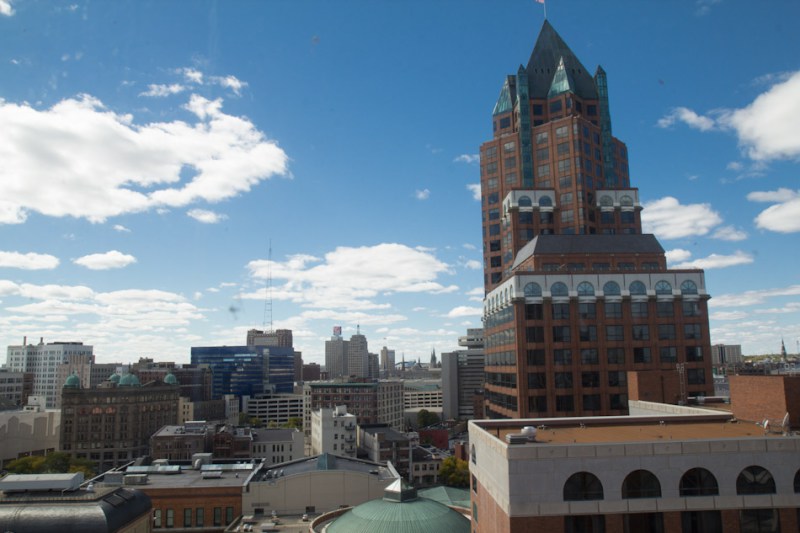Anti-urban politics is practically a sport for many elected officials. And perhaps nowhere has the tactic of trashing cities to win elections played out more starkly than in Wisconsin.
Governor Scott Walker has made targets out of Milwaukee and Madison. In the case of the former, Walker blows his dog whistle by portraying the city as a welfare case. The latter he stereotypes as a bunch of out-of-touch elitists.
Walker's got it all wrong. Bruce Murphy at Urban Milwaukee reports on new data that shows Milwaukee's wealth is in fact being siphoned off by the rest of Wisconsin:
By 2012, the data shows, the city’s economy had become so successful that Milwaukee got back just 88 cents in total state aid for every dollar in total taxes it paid to the state.
That includes every category of state dollars flowing to Milwaukee, from state aid to Milwaukee Public Schools to shared revenue to cities, transportation aid and other smaller categories, and also includes every form of taxes flowing from Milwaukee to the state, including sales taxes and personal and corporate income taxes paid by city residents and businesses. All this information is tracked by the state Department of Revenue (DOR) and it shows Milwaukee is a net contributor to the state.
“It’s stunning,” says [Mayor Tom] Barrett, whose staff used the DOR data to create this picture of Milwaukee. What it shows is that the city, in fiscal terms, has become a huge success.
That was not true as recently as 2009, when the city was getting more total state aid than taxes it sent to Madison: Milwaukee was getting $1.07 from the state for every dollar in taxes it paid. But by 2011 the city was a net contributor to the state and that net outflow has increased every year until by 2015 the city was paying nearly $1.4 billion in total taxes to the state and getting back just over $912 million in state aid. That’s a return of just 66 cents from the state for every dollar in taxes paid. If that trend continues, and all signs suggest it will, that figure will drop further in 2016 and even further in 2017.
More recommended reading today: Bikemore reviews Baltimore's new bike network expansion plan, which would aims to connect every neighborhood to low-stress bikeways within five years. Columbus Underground has details on the local transit agency's long-term vision for building high-capacity rapid transit. And Buffalo Rising looks at how a notoriously dangerous local highway became dramatically safer just by lowering the speed limit.





